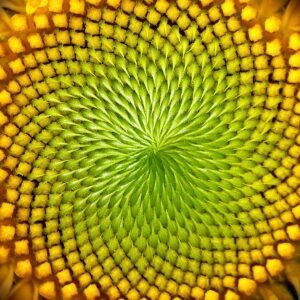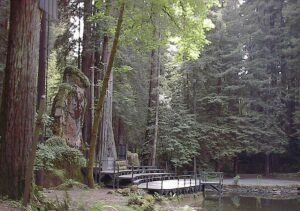The Battle of Los Angeles 1942 remains one of the most perplexing mysteries from World War II, capturing the attention of historians and UFO enthusiasts alike. In the early hours of February 25, 1942, the city of Los Angeles was gripped by fear and confusion as anti-aircraft defenses responded to what was believed to be an enemy attack. Despite the intense anti-aircraft fire and the chaotic reports, no conclusive evidence of enemy aircraft or other identifiable objects was found.
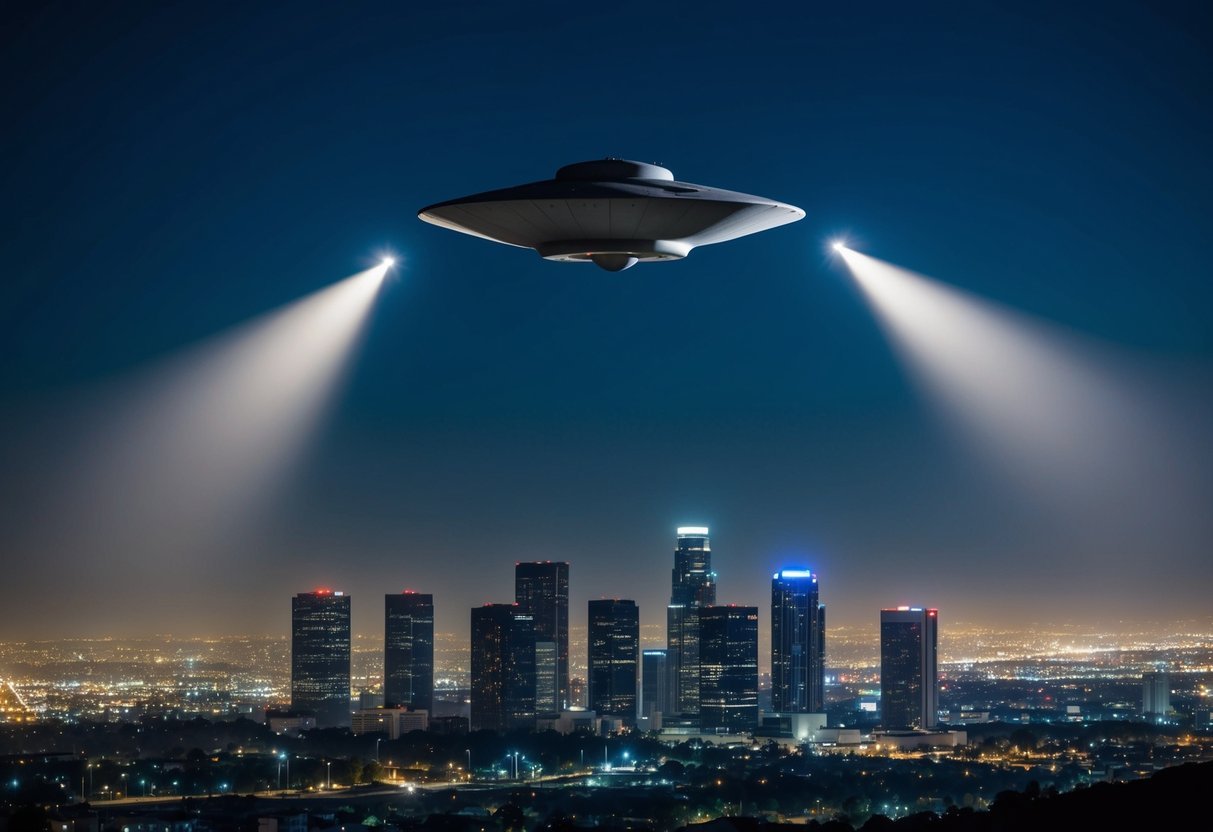
Eyewitnesses describe seeing unexplained lights in 1942 that seemed to hover over the city, leading to widespread panic and speculation. Amidst the chaos, the authorities and the public were left to speculate about the true nature of these sightings and whether they were linked to potential UFO activity. This incident, known as the World War II UFO incident, raised questions about the effectiveness of the Los Angeles air raid defenses and the reliability of the eyewitness accounts.
Theories surrounding the Battle of Los Angeles 1942 range from secret enemy aircraft to otherworldly visitors, making it a subject of enduring intrigue. Some believe the incident was merely a result of heightened war-time anxieties, while others suggest government cover-ups and alien encounters. Regardless of the truth, the mystery continues to captivate those who seek to understand the unexplained lights of 1942 and the infamous Los Angeles air raid.
Key Takeaways
- No confirmed enemy aircraft or objects were identified during the Los Angeles air raid 1942.
- Eyewitness reports describe strange lights, sparking theories about the World War II UFO incident.
- Theories include wartime panic, UFO sightings, and potential government cover-ups.
Historical Context
During the early 1940s, the United States found itself in a heightened state of alert following the attack on Pearl Harbor. In Los Angeles, this anxiety manifested in various ways, influencing both civilian life and military operations.
Before the Alarm: Tension in Los Angeles
The attack on Pearl Harbor in December 1941 had a profound impact on the American psyche. The West Coast, particularly Los Angeles, braced for potential attacks. As a major city, Los Angeles was a strategic target, leading to increased military presence.
Air raid preparations became commonplace. Sirens were installed throughout the city, and blackout drills were conducted to prepare the population. Civil defense organizations mobilized thousands of volunteers to watch for incoming enemy planes. The tension was palpable, with rumors circulating about enemy submarines and Japanese aircraft in the area. These precautions heightened public anxiety, setting the stage for events to follow.
World War II on the American Homefront
The impact of World War II extended beyond military operations into every facet of American life. In Los Angeles, the war effort transformed the economic and social landscape. Factories shifted to war production, creating job opportunities and attracting workers from across the country. Housing shortages emerged as a result of the influx.
The federal government implemented rationing of essential goods. Staples such as gas, rubber, and food faced strict controls. Hollywood, a cultural pillar of Los Angeles, also adapted by producing propaganda films and entertaining troops. These societal shifts were a backdrop to the fear of attacks, adding layers to the already tense atmosphere during key incidents like the Battle of Los Angeles.
Details of the 1942 Event
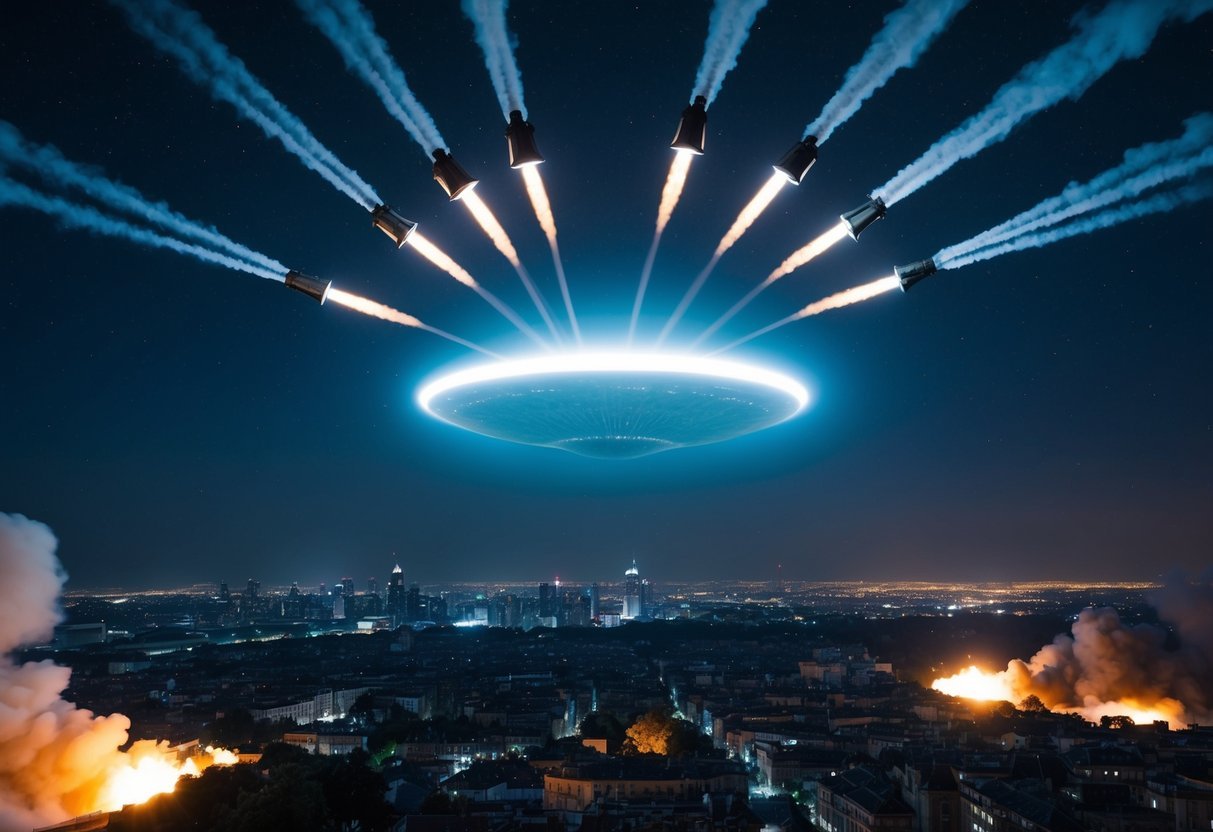
The Battle of Los Angeles 1942 was a significant moment, marked by unexpected aerial phenomena and an intense military reaction, impacting the city profoundly. It remains a focal point for theories and speculation.
The Night of the Air Raid
On February 25, 1942, the people of Los Angeles were catapulted into chaos when mysterious lights appeared in the night sky. These lights, described by witnesses as unusual and erratic, triggered widespread alarm.
Residents were eventually plunged into darkness as a precautionary measure after a citywide blackout was enforced. Panic and confusion spread swiftly as searchlights combed the sky, trying to pinpoint the source of the erratic lights.
Eyewitness accounts vividly recall the eerie glow of lights moving above the city. These sightings led to speculation and enduring mysteries, with many attributing the lights to unidentified flying objects, despite the lack of concrete evidence.
Military Response and Anti-Aircraft Action
In response to the perceived threat, the military deployed its defenses extensively. Anti-aircraft positions across Los Angeles opened fire, unleashing a barrage of shells. Over 1,400 rounds were fired during the confusion, as tension mounted among soldiers and civilians alike.
Military personnel operated searchlights to assist in targeting, skillfully sweeping the sky to improve accuracy. However, despite the aggressive action taken by the anti-aircraft units, no solid targets were confirmed to have been hit or identified.
The military’s response has been critiqued and analyzed, highlighting the heightened wartime anxieties and readiness of defense systems. Official reports from the time struggled to conclusively explain the incident or identify the mysterious aerial sightings that sparked this significant wartime event.
Eyewitness Accounts and Initial Reactions
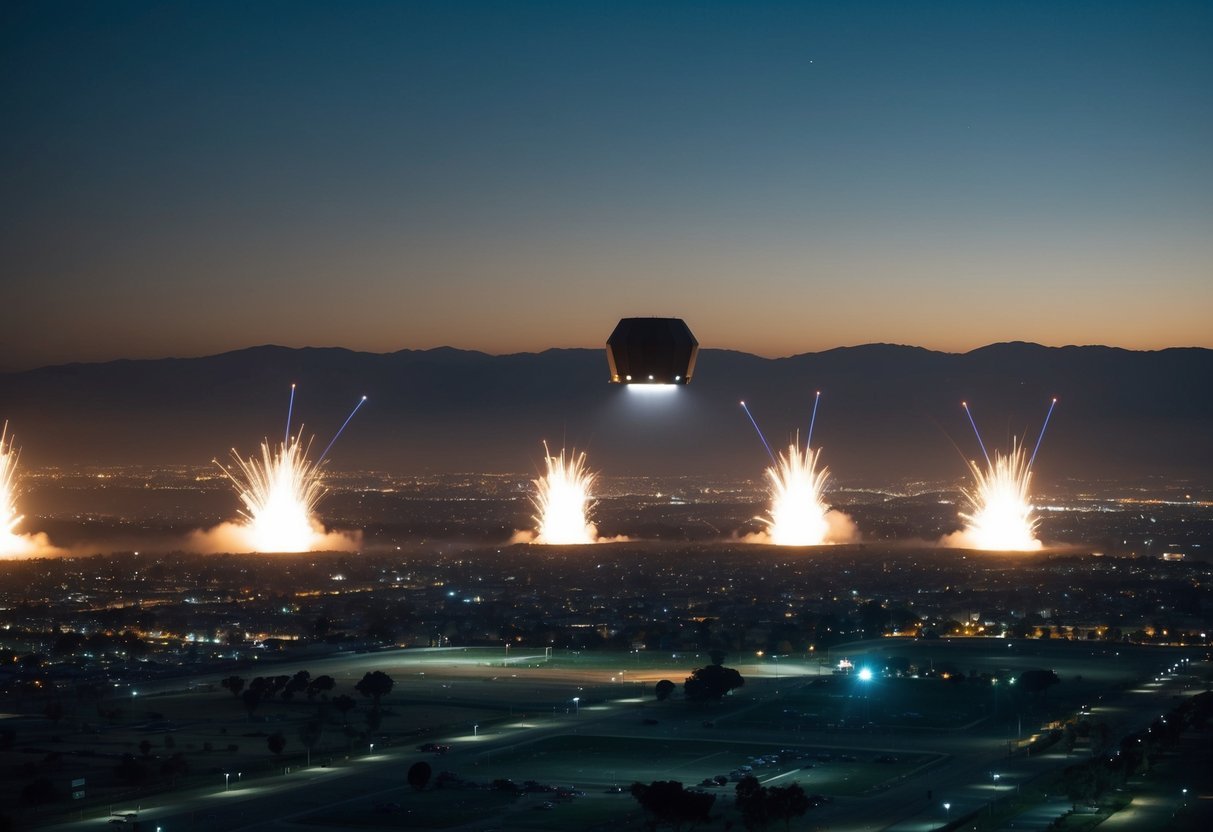
The Battle of Los Angeles in 1942 left both civilians and military personnel in a state of chaos and confusion. Eyewitness accounts ranged from sightings of unidentified flying objects to tales of mass panic during the event.
Civilian Observers and Mass Hysteria
During the early hours of February 25, 1942, civilians awoke to air raid sirens blaring across Los Angeles. Many residents flooded the streets, witnessing what was described as bright, unexplained lights hovering in the sky. The confusion quickly spread, resulting in widespread panic among the populace.
Reports from that night mention civilian observers claiming to see mysterious aircraft, which fueled rumors of an enemy attack. The phenomena also triggered a sense of mass hysteria, as anxiety about wartime invasions was high. Newspapers of the day reflected the fear and uncertainty that gripped the city, capturing the widespread alarm and confusion experienced by those present.
Military and Government Perspectives
As chaos unfolded, the U.S. military rapidly mobilized to address the apparent threat. Anti-aircraft batteries engaged, firing countless shells into the night sky, escalating the tension. Despite the extensive use of artillery, no enemy aircraft were confirmed shot down or even identified.
The Secretary of the Navy, along with other military officials, faced intense scrutiny as speculation of a cover-up emerged. Military personnel later attributed the incident to a false alarm, possibly instigated by weather phenomena or a misunderstanding of military exercises. This explanation, however, did little to quell the theories about potential UFO sightings during the Los Angeles air raid of 1942.
Popular Theories and Explanations
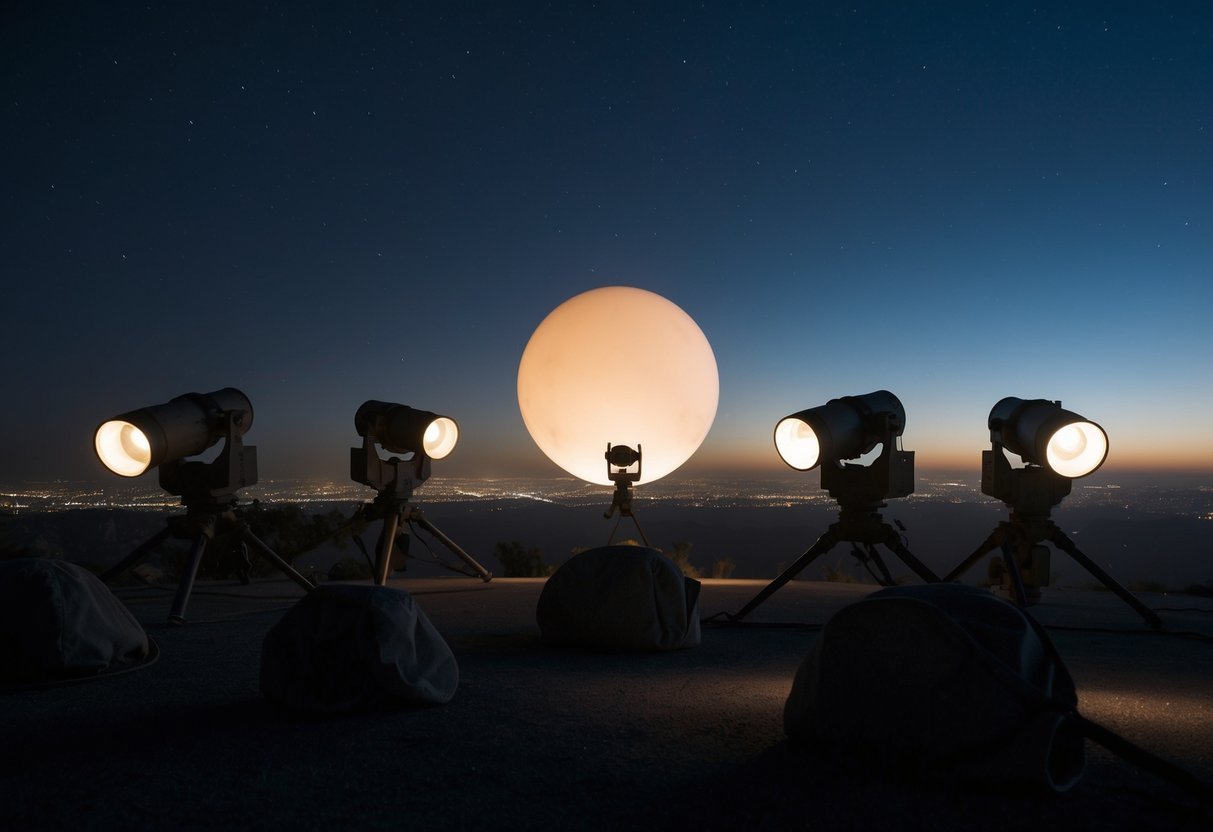
This segment delves into the various theories surrounding the Battle of Los Angeles 1942, exploring whether it was an enemy attack, a false alarm, or something else entirely. The role of UFOs and potential misidentifications are key focal points in understanding the historical context of this event.
Enemy Attack or False Alarm?
One prevailing theory is that the incident was either a genuine enemy attack or a colossal false alarm. With tensions high following the attack on Pearl Harbor, the presence of a Japanese submarine along the California coast raised alarm. Anti-aircraft defenses remained on high alert, fueling the possibility of mistaking harmless objects for threats.
Confusion gripped civilians and military personnel alike, as sporadic anti-aircraft fire lit up the sky. No actual evidence of damage was confirmed, leading many to consider that what transpired could have been a reaction to a phantom threat rather than an actual assault. The sky filled with searchlights and artillery fire but resulted in no substantial findings.
Conjecture of UFO Involvement
The possibility of UFOs being involved in this enigmatic event has intrigued enthusiasts for decades. Some reports mentioned unusual lights in the sky, distinct from typical military aircraft. This has led to speculation that unidentified flying objects were indeed present.
Eyewitness accounts spoke of movements that seemed unlike any known aircraft, feeding into the narrative of extraterrestrial involvement. Despite lacking concrete evidence, the idea of UFOs adds a layer of intrigue and mystique to the event. Images circulated in newspapers at the time showed mysterious lights that many interpreted as evidence of something otherworldly present during the chaos.
Alternative Accounts and Misidentification
Other theories suggest alternative explanations such as misidentification of common objects. A weather balloon misperceived as an enemy plane or UFO is one such theory. This explanation considers how stress and intense fear could lead to seeing what wasn’t there.
Historical documentation indicates widespread hysteria, where anxious eyes might have misconstrued benign objects as hostile threats. Long after the incident, the lack of conclusive evidence remains, entwining the mystery further. While some accounts rationalize it as misinterpretation, the absence of definitive proof leaves room for ongoing speculation and curiosity among historians and enthusiasts alike.
Official Reports and Explanations
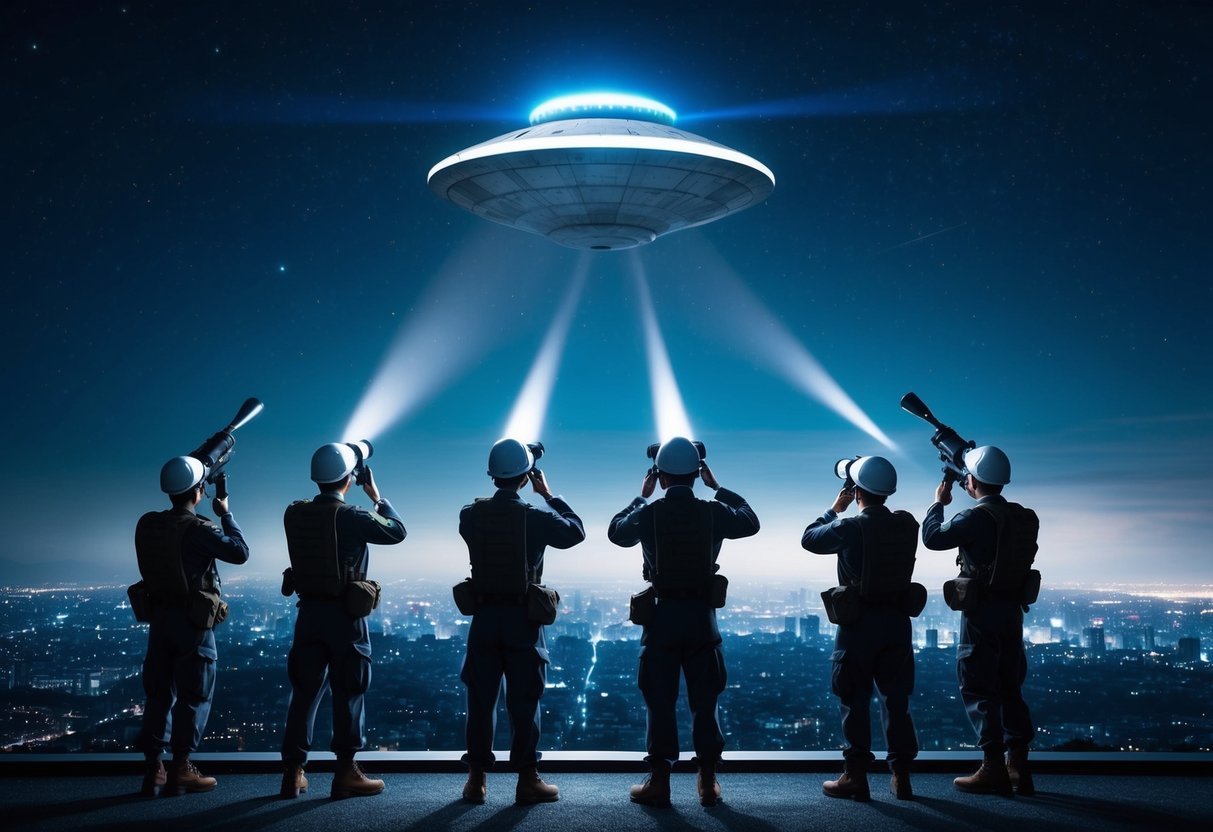
The Battle of Los Angeles in 1942 remains a mysterious event with various official reports attempting to explain the incident. Military documents and government communications strive to demystify the unusual circumstances surrounding the aerial phenomena, including the possibility of enemy activity or misidentifications.
Government Investigations and Findings
The U.S. government conducted investigations to understand the events of February 25, 1942. Early reports suggested that the unexplained lights over Los Angeles could have been weather balloons, which were mistaken for enemy aircraft. The presence of numerous sightings by civilians and military personnel prompted officials to scrutinize radar data and eyewitness accounts.
The Army Air Force soon concluded that no enemy aircraft had been involved, attributing the incident to a false alarm. Despite this, the explanation of a wartime nervousness response persisted. Independent investigators and historians continue to debate the accuracy of these official findings, questioning if the true nature of these lights remains unsolved.
Military Debriefings and Documents
Military debriefings emphasized the chaos that ensued during the incident. Anti-aircraft artillery was heavily deployed, firing thousands of rounds into the sky. Despite the sheer number of projectiles used, no tangible evidence of enemy aircraft or damage was found, which led to suspicions of an errant radar reading.
Some documents alluded to the possibility of Japanese submarines lurking off the coast, triggering defenses. However, no corroborative evidence of such a threat surfaced, further deepening the mystery. Analysts maintain that miscommunication and heightened war-time anxiety may have played key roles in the erroneous military response during the Los Angeles air raid of 1942.
Cultural Impact and Legacy
The Battle of Los Angeles 1942 has left a lasting mark on American culture, influencing both popular media and the field of UFO research. Its mysterious nature has sparked continued interest and speculation.
The Battle’s Role in Popular Media
Hollywood has embraced the mystique surrounding the Battle of Los Angeles, leading to its inclusion in various forms of entertainment. Films and documentaries often depict the dramatic night of February 1942, exploring themes of wartime tension and unidentified flying objects. These portrayals intrigue audiences with the idea of extraterrestrial involvement.
Comic books and literature have also drawn from the battle’s enigmatic narrative. Writers and creators have reimagined this historical event in speculative formats, adding an imaginative twist to its retelling. Such portrayals ensure that the incident remains part of the cultural conversation.
Influence on UFO Research and Lore
The Battle of Los Angeles 1942 played a significant role in shaping modern UFO research and lore. Eyewitness accounts of unexplained lights in 1942 contributed to growing public and scientific interest in UFO phenomena. These sightings spurred debates about national security and extraterrestrial life, leading researchers to delve deeper into the study of unidentified aerial phenomena.
The incident has since become a case study for UFO enthusiasts and researchers, influencing theories about government cover-ups and extraterrestrial visitation. The fascination with this wartime mystery continues to fuel documentaries, books, and debates within the UFO community, keeping the story alive in the public imagination.
Conclusion
The Battle of Los Angeles 1942 remains a captivating puzzle in history, blending traces of intrigue and military mystery. The event happened suddenly and left countless eyewitnesses and residents of Los Angeles baffled by the unexplained lights and actions in the sky.
Various theories attempt to unravel the truth behind the sightings and the intense anti-aircraft response. Some speculate about UFO sightings, suggesting the presence of unidentified aircraft not of this world. Others propose the incident might have been a military experiment or exaggerated reactions to wartime nerves.
What is certain is that the event resulted in widespread confusion and astonishment. It highlighted the tensions and fear during World War II in the United States, especially on the west coast, following the attack on Pearl Harbor. While many questions about the Battle of Los Angeles 1942 remain unanswered, it continues to evoke curious and keen interest among historians and enthusiasts of unexplained phenomena alike.
Frequently Asked Questions
The Battle of Los Angeles 1942 remains a subject of intrigue due to the intense anti-aircraft response and varying eyewitness accounts. The incident has prompted numerous theories, including UFO sightings and military errors, influencing public perception and historical narratives.
What triggered the intense anti-aircraft response in Los Angeles in 1942?
In the early hours of February 25, 1942, radar detected an unidentified object approaching the California coast, which led to a citywide blackout and an intense anti-aircraft barrage. Concerns over possible Japanese air raids after the Pearl Harbor attack contributed to the heightened state of alert.
How did eyewitness accounts shape public perception of the Battle of Los Angeles?
Eyewitnesses reported seeing unusual lights and objects in the sky, which fueled public speculation and fear. These accounts were shared widely in newspapers and added to the mystery surrounding the event, leading to various interpretations and theories about what actually occurred that night.
What were the official explanations given for the unexplained lights and objects during the incident?
The U.S. military initially suggested that weather balloons might have been the cause of the radar readings and visual sightings. Some officials later attributed the incident to war nerves or a potential false alarm caused by civilian reports and atmospheric conditions.
How have interpretations of the Battle of Los Angeles changed over time?
Initially viewed through the lens of wartime nerves, the incident has been reinterpreted by historians and UFO enthusiasts. Some see it as a case of mistaken identity, while others argue it might have been an early example of unexplained aerial phenomena, sparking ongoing debate.
What role do UFO theories play in the discussions about the Battle of Los Angeles?
UFO theories propose that the objects seen by military personnel and civilians were extraterrestrial in origin. These theories gained momentum in the 1940s and 1950s as post-war UFO sightings became more common, adding a layer of mystery to the historical incident.
How has the Battle of Los Angeles influenced WWII historical narratives and popular culture?
This event has captured the imagination of many and is frequently referenced in books, documentaries, and movies. Its mysterious nature has made it a staple in discussions about UFOs and wartime paranoia, contributing to ongoing fascination with unexplained incidents during World War II.

